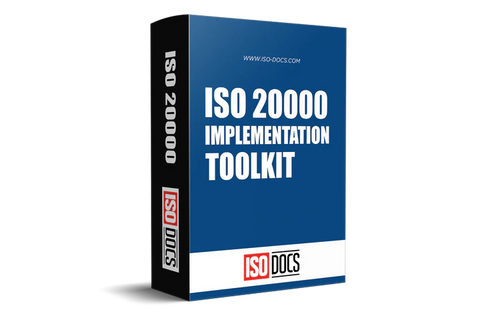ISO 20000 Release and Deployment Management Process Template
What is Release and Deployment Management Process?
Release and Deployment Management ensures that new software releases are installed and configured in the production environment. It is also responsible for migrating changes to the production environment, often in software or application updates, service packs, hotfixes, or security patches.

Release and Deployment Management is a complex process that involves several different activities, including:
- Change Management
- Configuration Management
- Release Management
- Deployment Management
- Environment Management
The primary objective of Release and Deployment Management is to ensure that new software releases are adequately planned, tested, and deployed in a controlled and timely manner. This helps to ensure that new software releases do not cause disruptions to business operations and that any risks associated with the latest software releases are appropriately managed.
Release and Deployment Management is essential for organizations that rely on software to run their business operations. Organizations can adequately plan and manage software releases to avoid disruptions to their business operations and minimize the risks associated with new software releases.
What are the Release and deployment management phases?
Release and deployment management phases are an essential part of ISO 20000. They are designed to ensure that new and changed services are delivered in a controlled and coordinated manner.
The phases are not new but have been updated and are more specific in the latest standard version. The goal is to help organizations better understand the release and deployment process to manage it more effectively.
1. Release Planning :
The release plan is a document that describes the release strategy, schedule, and contents. In addition, it coordinates the activities of all stakeholders involved in the release process.
The release plan should be updated throughout the release and deployment management process to reflect software products, services, and environment changes.
2. Release Building and Testing :
Release building and testing are where the software is built and tested in the test environment before it is deployed to production.
Release building and testing ensure that the software can be deployed to production with minimal risk and disruption.
3. Release and Deployment :
The release and deployment management phases of ISO 20000 help ensure that new and changed IT services are delivered in a controlled and coordinated manner. They also help ensure services are consistently deployed, operational, and available to customers and service providers.
The release and deployment management process creates, tests, and implements new software releases. In addition, this process includes the review and closing of a deployment.
4. Review and Closing of deployment :
The purpose of the review and closing of a deployment is to ensure that the release has been successfully deployed and to identify any issues that need to be addressed. The release manager should conduct this review and involve all relevant stakeholders.
Release and Deployment Process Flow :

The process flow covers the following:
1. Plan the release :The first step is to plan the release. This includes identifying the scope of the release, setting the schedule, and allocating the resources.
2. Prepare for the release :The second step is to prepare for the release. This includes creating the release plan, testing the changes, and updating the documentation.
3. Execute the release :The third step is to execute the release. This includes deploying the changes to the production environment and verifying that the new system is working as expected.
4. Monitor and review the release :The fourth step is to monitor and review the disclaimer. This includes monitoring the new system's performance and making necessary changes.
5. Evaluation of the results of a release or deployment :Finally, the fourth phase is to evaluate the results of the freedom and deployment. This helps to ensure that the new or changed service meets the business's expectations.
Release and deployment management are essential parts of ISO 20000. They are designed to ensure that new and changed services are delivered in a controlled and coordinated manner.
The phases are not new but have been made more specific in the latest standard version. The goal is to help organizations better understand the release and deployment process to manage it more effectively.
The Challenges of Release and Deployment Management :
The main aim of Release and Deployment Management is to protect the integrity of the live environment and to minimize the risk of service disruption.
However, specific challenges must be considered while implementing Release and Deployment Management processes in an organization. Some of these challenges are listed below:
- Lack of Standardization: This needs to be more of standardization in how changes are introduced into the production environment. This can lead to inconsistency and errors in the process.
- Complexity: Release and Deployment Management can be complex due to the many tools and technologies involved.
- Documentation: Release and Deployment Management documentation can be challenging to maintain and keep up to date.
- Change Control: Change Control can be a challenge in Release and Deployment Management as it needs to be coordinated with multiple teams.
- Testing: Testing changes before they are introduced into the production environment is essential but can be time-consuming.
Risks of Release and Deployment Management :
The risks of release and deployment management in ISO 20000 vary. However, they can be broadly categorized into four main areas:
- Technical risks: These relate to the technology used to deliver the service and the ability of that technology to meet the agreed-upon on service levels.
- Operational risks : relate to the people and processes used to operate and manage the service.
- Business risk : related to the changes that the service may bring to the business and the potential impact of those changes.
- Regulatory risks : relate to the service's compliance requirements and potential penalties for non-compliance.
- Each of these risks must be carefully considered and managed to ensure the service's success.



